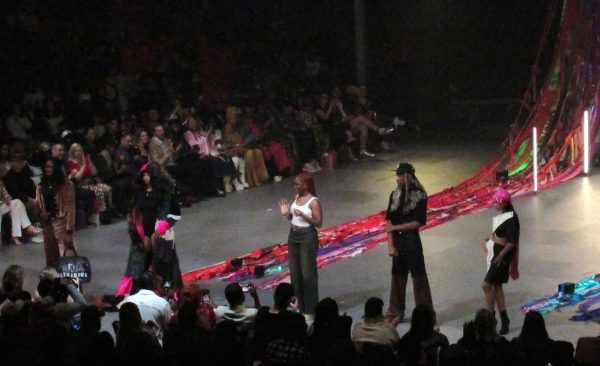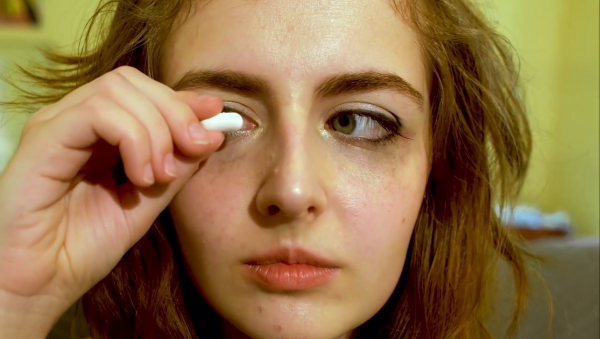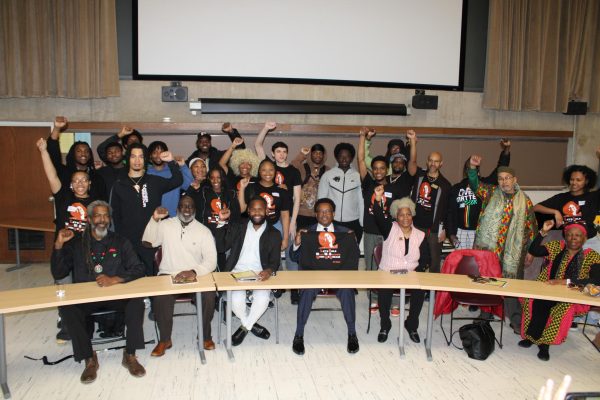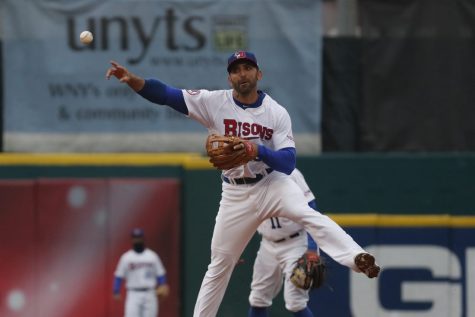As a sport, women’s hockey has growth potential– if it gets the chance
If you didn’t watch women’s hockey during the Olympics, don’t feel bad. You’re probably not the only person who missed out.
If you did watch or follow along, you may be familiar with or even have uttered some of these remarks.
“There’s no body checking in women’s hockey. That’s boring.”
“Amanda Kessel is Phil Kessel’s sister, everyone!”
And my personal favorite: “Why is women’s hockey even a thing in the Olympics? There’s no competition for the North American teams.”
This is coming from people who have either just tuned in or have been watching since 1998, the first year of the women’s ice hockey Olympic tournament. People who cheered every single American goal scored in the men’s opener against Slovakia (which they won 7-1, by the way) and swear up and down that the gap has narrowed to satisfaction on the men’s side.
Which is true, if you consider the pool widening from four teams vying for gold to six — which is how it’s been since 1994, when Sweden won in Lillehammer — satisfactory.
Imagine that. Over a 74-year gap, the same four countries have won gold. Canada had won six of the first seven Olympic men’s tournaments, in fact.
But nope, the women’s game is taking too long to expand. Even though it’s only been 16 years since women have first played hockey in the Olympics. Sixteen years.
You know what I did at 16? Played really crappy violin, kicked ass at lacrosse and mooned over boys. (Okay, most of it was lacrosse. And boys.)
If that doesn’t convince you, consider that Julie Chu, the oldest player on Team USA, has played in three Games, and she’s just 31 years old. Do you really think that’s enough time for parity to occur, considering how long it’s been to make room for six competitive teams on the men’s side?
The point is, this game is young. Yes, it still has its issues. All of the non-body checking and one-referee BS aside (and trust me, I have issues with all of it), the finish is still lacking in some of these teams. Possession is still heavily in favor of the USA and Canada, as evidenced by the insane shot totals in every game. Currently, European teams are relying on fantastic goaltending and defensive play in order to keep up.
And they’ve gotten it. Switzerland’s Florence Schelling and Finland’s Noora Raty came oh-so-close to tripping up the North American superpowers. As a result, Finland had close shaves and Switzerland won bronze, achieving its best result against Canada (a 3-1 loss) during the semifinals.
But as each team has shown, good goaltending can only do so much. The complete game needs to be there.
In an ideal world, it would be, and we wouldn’t be having this discussion. But it will come eventually.
In an ideal world, maybe the gold medal game would have been Sweden-Finland, or Russia somewhere in the mix. Maybe Switzerland would have stunned the Canadians on the strength of Schelling’s goaltending. Maybe Japan would have appeared in its fourth Olympics this time around. We might even have a Norway, a Belarus, a Denmark.
In an ideal world, we wouldn’t be hearing about an elite international goalie calling it quits at the age of 24.
But this is real life. And instead, it’s a battle of North American skill. And Raty, the former Minnesota standout, has made this Olympics in Sochi her last.
It’s not because she’s sick, injured, or tired of the sport — it’s because she knows there are no opportunities for growth on the women’s side.
For the men’s teams, it’s different. They are professionals. They’ve returned to a full-time job that involves much of the same stuff they just did in Sochi — whether it’s the NHL, KHL, Swiss League, Swedish Elite League, or SM-liiga in Finland. They can enjoy their million-dollar salaries, the crowds of thousands who’ve spent good money for their seats (in North America, anyway), the perks that come with being an elite pro athlete in this society.
The women have put their entire lives on hold for this tournament. They’ve left behind jobs and other opportunities off the ice. Some will return to college life and hockey, some to a Russian league that’s been criticized (by Raty, at least) as not being challenging enough, some to a North American league that can’t even afford to pay its players. For them, the Olympics is the biggest stage they will ever be on. And a large number of the people who watched the U.S. beat Sweden, complaining about the “lack of competition” the entire time, will have forgotten most of the players’ names by the time the gold and silver medals are being handed out on Feb. 20.
So why do some feel so passionately that this incredible game needs to be shut down?
The quick answer would be “sexism,” and it’s not wrong (despite the “I’m Not Sexist!” brigade flexing its muscles and getting ready to spew defenses). There’s plenty of women’s hockey, and women’s sports in general, to be found, but little to none of it is actually covered save for maybe 30 seconds at the end of a SportsCenter broadcast. Somehow, the “boring” label got applied to women’s hockey (maybe because they actually rely on skill and not the ability to break people’s faces open), and it began to languish in obscurity. Therefore, it gets no exposure because no one thinks it’s profitable, but the only way it can be profitable is if it gets exposure.
There’s also the idea that after all these millenia that women still can’t hack it like the boys, and the rule changes and restrictions that come with that, which provide a destructive little loop that creates actual disparity between male and female athletes in many ways.
And so, while the NHL squabbles over salary caps and lockouts every eight years, and the KHL throws money at its players, the top women’s players in the world are left wondering how they’ll be able to afford real life and play the game they love. Why? Because they’re women and no one thinks they have the skill to create a profitable league, despite plenty of examples to the contrary.
Noora Raty knows this. It’s part of the reason she’s hanging up her skates. She knows there’s no more room for her on this side of the ice. She can try her best with the boys in Europe — and let’s hope they’ll let her — but what does that say for the women’s game?
I guess we’ll see. But we’ll have to be patient, and we’ll have to keep the game visible.
Eliminating women’s hockey from the Olympics will solve nothing. It won’t make the game more competitive; in fact, with no Olympic platform and no professional league, it’ll shrink the pool of options for all those young women who were told to stop dreaming of Stanley Cup silver because “you’re not going to get there.” Face it — this sport depends on the Olympics for much of its exposure. And if you take that away, you’ll kill whatever progress it’s made in 16 short years.
Check www.buffstaterecord.com later this week for an exclusive roundtable discussion with players from the Buffalo State women’s hockey team, talking about the state of their sport.
Email: [email protected]
Twitter: @A_Rodriguez39
(Note: A version of this post originally appeared Feb. 17, 2014 on the SB Nation community Hockey Wilderness.)










